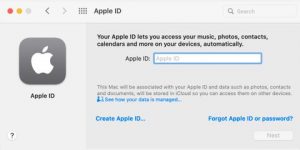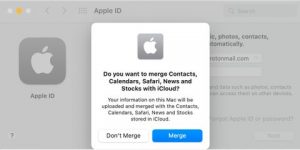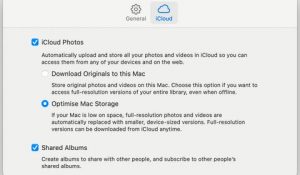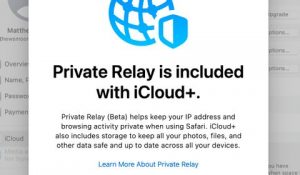How to set up iCloud on your Mac
To get the most out of your Mac, you need to use the iCloud service alongside it. The iCloud service is a core component of Apple’s ecosystem, and when enabled, it allows you to sync data across multiple devices through a secure server. If you use multiple Apple products, iCloud is a great option for keeping important information like contacts and calendar events up to date. If your Mac is lost or stolen, your valuable data is safe and ready to be restored on a server.
an iCloud service is an essential tool for Mac users; So let’s check how to set up and use the iCloud service on your Mac:
How to create an iCloud service account on Mac
If you already have an Apple ID account, you can sign in to iCloud via System Preferences > Apple ID and follow the prompts to set up iCloud. However, if you don’t have an Apple account, you can create one on your Mac. Here’s how to create an iCloud account:
- Open the Apple menu and go to System Preferences > Apple ID.
- Click Create Apple ID.
- Enter your date of birth and click Next.
- Then enter your name, email address, and password and click Next.
- If you don’t want to use your current email, you can click Get a free iCloud email address and create a new one.

tip:
In most countries, the minimum age to create an Apple ID without parental permission is 13. However, the age varies by region, so you should check Apple Support for more information. If a user is too young to create an account, you can use Family Sharing to create an account for them.
Once you’ve created your Apple ID, macOS should automatically sign you into the new iCloud account. Eventually, you’ll see a message asking if you want to merge certain information, including contacts and calendars.

You must select Merge to start syncing the listed data, and if you prefer to select items individually, you can click Don’t Merge and continue with the settings after you are fully logged in. You can also enable Find My Mac by clicking Allow if you want.
Which features of the iCloud service should we use on our Mac?
Once you’re signed in to iCloud, you’ll see a list of features in your Apple ID system preferences that you can enable, but if you don’t see this list, you may need to click iCloud in the side menu.

Deciding which services to turn on comes down to a simple question: What data do you want to sync with iCloud? If you don’t use some of the services listed, you probably don’t need to waste storage space syncing them. That said, most services don’t take up much space, so you might want to turn them on.
Let’s look at each of iCloud’s features so you can decide what’s worth enabling.
Pictures
With Photos enabled, the iCloud service syncs photos and videos with your other devices that have this service enabled. However, media content can take up a lot of space, so if you have a lot of data, you may need to upgrade your iCloud storage.

Once you’ve turned on Photos, you can adjust settings in the Photos app by going to Photos > Preferences > iCloud.
iCloud Keychain
iCloud Keychain is great for securely syncing your usernames, passwords, and billing information across multiple devices. Of course, you should enable this feature only on your devices.
iCloud Drive
iCloud Drive is like an online hard drive that you can use to store other important files like documents. This service is ideal for backing up things you don’t want to lose, especially if you don’t regularly do Time Machine backups.

You can choose which extras are saved to iCloud Drive by clicking Options in System Preferences > Apple ID > iCloud. To manually add files to the server, you can access iCloud Drive from the Finder sidebar.
iCloud Mail
Enabling iCloud Mail adds your iCloud email address to the Mac Mail app. If you’ve also selected iCloud Mail in your iCloud Drive options, additional settings like blocked senders, signatures, and rules are synced to the server.
Contacts, calendars, reminders, and notes
If you use multiple Apple products, syncing your contacts, calendars, reminders, and notes across all devices is helpful. Plus, if something happens to your Mac, all that important information will still be available on the server.
Safari browser
Enabling Safari for iCloud lets, you sync bookmarks, reading lists, and open tabs across multiple devices. This feature is great for creating a good experience and increasing productivity.
Find My Mac
Find My Mac lets you remotely locate, lock, and wipe your Mac. There’s no good reason not to enable this feature in most cases. After all, if your Mac does go missing, you’ll at least have a chance to track it down or prevent others from using it.
News
Enabling News in iCloud syncs certain information with the server, including channels, saved stories, and reading history, which is useful if you read News from multiple devices.
iCloud Stocks
Enabling iCloud Stocks syncs your watchlist with other devices.
iCloud Home
When you enable iCloud Home, information about your HomeKit accessories is synced to the server for use with your other devices.
Siri
When you interact with Siri, its behavior changes based on your usage. Syncing it with iCloud lets, you access a customized version of Apple’s AI assistant across multiple devices.
Hide My Email and Private Relay
If you have an iCloud+ subscription or an upgraded version of paid iCloud, you can use the Hide My Email and Private Relay features.

The Hide My Email feature allows you to create a fake email address for online use, so you don’t have to provide your real details, and using this feature is a great way to avoid spam.
A private Relay is a security tool that allows you to browse the web privately. When this service is enabled, it hides your IP address and other identifying information from bots.
How to upgrade your iCloud service memory?
If you are running low on iCloud storage, you can pay more to get more space. Here’s how to upgrade iCloud storage on Mac:
- Go to System Preferences > Apple ID.
- Select iCloud service in the side menu.
- Click Manage at the bottom of the window.
- Click on Add Storage.
- Select a new storage plan, click Next, and complete the upgrade process.
If you are a Mac user, the iCloud service is a valuable and practically mandatory tool. Synchronizing important information allows easy access from other devices and can help prevent data loss.











